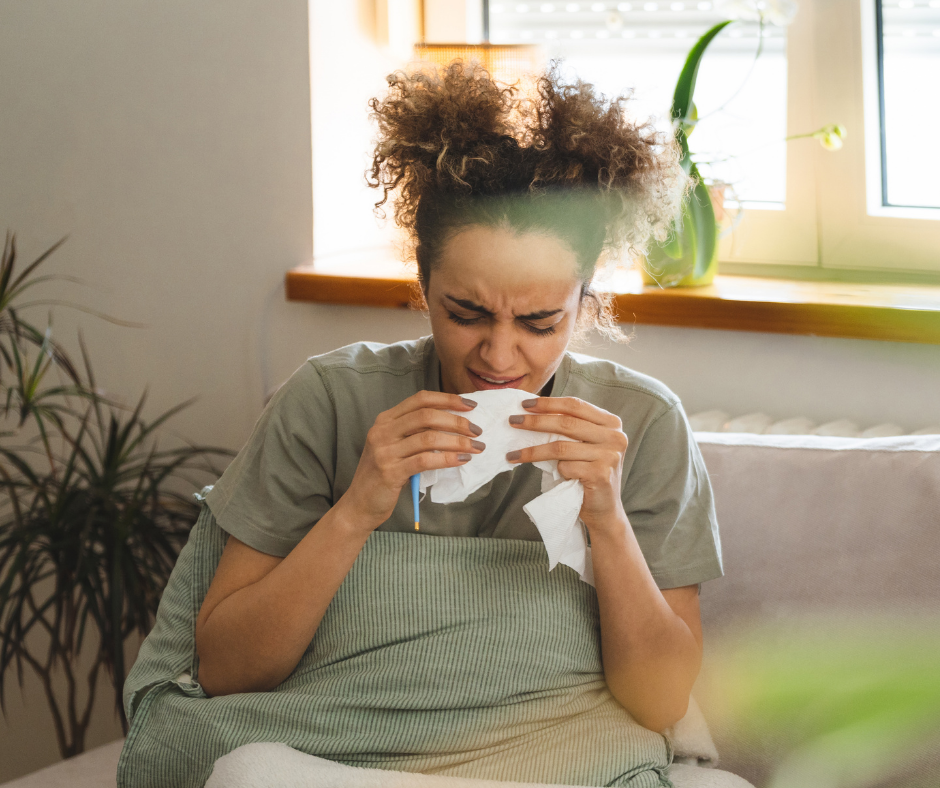SIGNS OF POOR INDOOR AIR QUALITY
Poor air quality can have a negative impact on your health and that of your family. It’s important to have your air tested and to come up with solutions to keep it at its best.
Here are five signs that your household has poor indoor air quality.
Coughing or Breathing Problems

Coughing, along with breathing problems, is one of the most common signs of poor air quality. The concentration of particles in the air might be the source of these respiratory problems due to a lack of airflow.
You’ll run out of fresh oxygen in the room if you don’t have sufficient air circulation. Breathing unhealthy, carbon dioxide-rich air might cause complications and other respiratory issues. If nothing is done about it, it might be fatal, since it will have an impact on your life. Keep your air ducts cleaned on a regular basis, this helps with air circulation, minimizes air pollutants, and lets you breathe safer air.
Sleeping Problems
Poor indoor air quality makes getting a good night’s sleep harder. One study found that people were 60% more prone to having low sleep efficiency if they were in an area with high levels of air pollution. Sleeping less than 88% of the time in bed was regarded as low sleep efficiency.
The temperature and humidity in your house might also affect the quality of your sleep. If you’re having trouble sleeping at night, fixing problems with your HVAC system can help in a number of ways.
Dust Buildup Around Vents And On Surfaces

If you have a lot of dust in your house and it’s obstructing the area surrounding your air vents, it would absolutely mean you have an air quality problem that needs to be addressed right away.
Pollen, dust mites, pet dander, and other highly allergic particles are triggering your allergies, which can be readily reduced with an air filter upgrade or HEPA filtration system add-on. Additionally, you can have your HVAC cleaned by professionals who are well versed in the said job.
Inconsistent Temperature Around the House
You’ll notice that there are cold and warm areas in your house, which indicate air distribution problems, and might also indicate poor indoor air quality. This is an indication that the air in your house is not flowing properly. Your indoor air quality is likely to deteriorate if your HVAC system isn’t sustaining optimum temperature and humidity levels.
Problems with Humidity
The correct level of relative humidity, between 35 and 50 percent, is optimal for comfort and prevents the growth of microorganisms. When there isn’t enough humidity in the air, your body (and house) might suffer from dehydration: Warping furniture and structural components.
You’ll also notice or have dry/itchy skin, eyes, sinuses, and respiratory infections. If you have too much humidity in your house, mold, mildew, and microbes will grow. Fortunately, adding humidifiers and dehumidifiers to your house may readily solve these issues.
Growth of Mold and Mildew
Mold and mildew growth in the house is commonly associated with excessive relative humidity and improper air circulation. Mold-affected houses have a distinct musty odor, as well as green and black (mold) patches on surfaces, notably near sinks, tubs, and other locations where moisture/water is usually present.
Unpleasant Odors

These unpleasant smells are from mold/mildew growth, pest infestation, chemicals, or the decomposition of dirt/dust/debris on surfaces in your house all tell you that you have poor indoor air quality. Though it’s easy to become used to your home’s smell, they’ll be more noticeable once you’ve returned from a week away or when you went out for a couple of hours.
Maintaining a safe indoor air quality can help avoid respiratory problems. Have your HVAC system or air ducts cleaned regularly and always inspect to see if there is dust buildup around your home.
If you notice or have any of these telltale signs, contact your local HVAC contractor right away. You can give us a call and we’ll deal with your HVAC systems to keep safer and clean air quality in your home.


